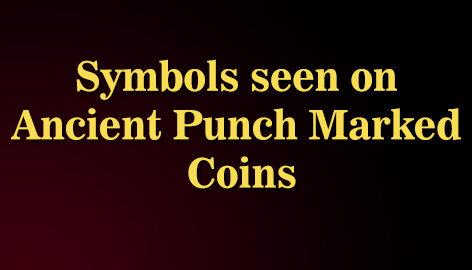

Punch marked coins are the earliest coin issued in India. These coins were issued between the 6th century BC and 2nd Century BC. The study of this coin is a very fascinating and mysterious part of Indian coinage. The Punch Marked Coins were issued during the Janapada and Mahajanapa during the ancient period.
Janapada is derived from the Sanskrit word ‘Jana’ and ‘Pada’, Jana means people and pada means foot, hence, the word Janapada could mean, ‘foothold of the tribes’. The Janapada was the highest political unit during the ancient period. The head of this kingdom was Rajan or King, A chief (purohita) or priest, and a (senani) or commander of the army who would assist the king. There were two other political bodies Sabha and Samiti. The sabha was the council of elders and the samiti was the general assembly of the entire people. The coins issued by them are known as Punch Marked Coins. These is known as Punch Marked coins because they are made by punches over the coins. The punches are of small symbols or figure over the coins. The symbols seen of the ancient punch-marked coins are very amazing and speak something about the ancient people’s life.
According to the Arthasastra, written by Kautilya during the 4th century had given detailed information about the list of objects used to manufacture coins first, the metal was melted in crucibles known as Musha, and then it is purified with alkalis. In the next step, the metals were beaten into the sheets of an anvil with a hammer. Later, these sheets were cut into pieces with clippers. In the final step, the coins were punched with the die having symbols. Symbols seen on the ancient punch-marked coins differ from place to place. Some coin has only one punch, some have two, some has four and some has five.
The metal of the desired weight of the coin was melted and then poured on the earth or on some flat boards to take its shape. The punching device used to have only symbols like geometrical and floral patterns, hills, trees, birds, animals, and reptiles, human figure, etc. This technique of punching coins was very unique and thus such coins were known as Punch Marked Coins.
The Punch marked coins issued during the ancient period were issued generally in silver and copper. One should ways collects the coins because it contains the history of our ancient India. Punch Marked coins are the old ancient Indian coins (https://www.mintageworld.com/coin/dynasty/17/) are of irregular shapes.
The bull is considered as one of the most auspicious symbols, it is a symbol of hard work and strength. Bull is one of the most common symbols seen on ancient Punch marked coins A bull –the indigenous domestic animal vital for agriculture was honoured first time on this coin. The bull is also known as Nandi, which means ‘giving delight’ or giving joy, it is a sacred bull of the Hindu god Shiva, one of the most important Hindu gods. Shiva and Nandi’s association in Hindu scriptures and art can be traced to very early Indian culture.
The arched hill symbol on the ancient punch-marked coin is generally considered as the symbol of Buddhist Chaitya. The six arched hills is also the common symbol found in the ancient Punch marked coins. The arched hill symbol was initiated in the coins of the Maurya Empire (3rd to 2nd Century BC). Later it also appeared in the coins of Taxila, Satavahanas, Western Kshatrapas, Kunindas, Traikutaka, Vidarbha Janapadas.
An elephant is considered one of the most majestic animals used in war. The elephant is an important part of our civilization. He is appreciated for his large size and majestic mannerism. He is generally considered a symbol of good luck and fortune. Most of the kings went on the war on elephant backs. The elephant symbol was a very popular motif in all Sinhalese art. An Elephant is one of the most popular animals in India and is also subjected to various cultural depictions in mythology, symbolism, and popular culture. Many Indian King issued coins with an image of an elephant.
The hollow cross symbol has many beliefs and different people have different opinions about Hollow Cross Symbol.
Some experts have a belief that this hollow cross symbol might be related to the Buddhist religion. Some relate this symbol to a sacred fire altar or ‘Agni Kund’, on the other hand, some suggest that it was a place where sacrifices were performed.
Some experts relate this open crossed symbol to a water tank, where the four arms schematically show access points to the centre where water is stored or it can also represent a holy water tank which can be used possibly for ritual bathing.
I’m sure one day we will soon be able to unveil the mysteries of these symbols on old ancient Indian coins and come to a concrete conclusion. Until then the true meaning of ‘Hollow Cross’ on coins is open for debate.
One should always buy the old ancient Indian coins because it contains the history of our ancient India.
The Mintage World Team comprises of experts, researchers and writers from the field of Philately, Notaphily and Numismatics who try to shed light on some of the most interesting aspects of coins, banknotes and stamps from not just India but across the globe as well.